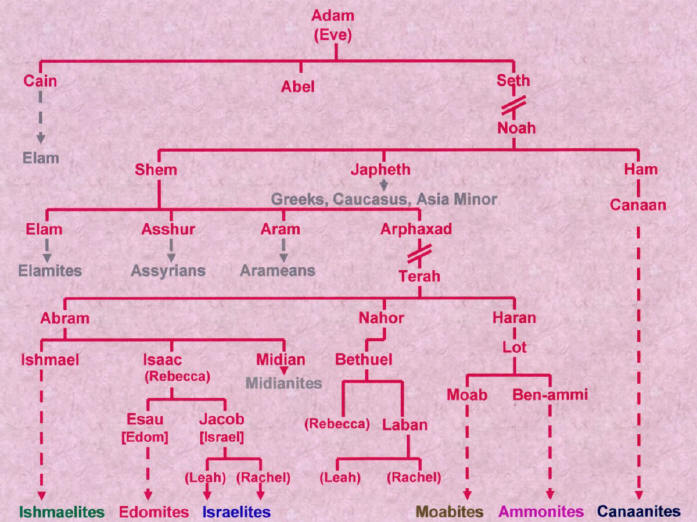The
Jesus
Movement
|
The following information is presented which suggests that Jesus may not
have been a "Prince of Peace" bringing a message of universal love to all
mankind, but rather may have been more militant and more specifically Jewish
in his orientation than is generally recognized. He may even
have posed a potential political threat to the Roman colonial administration
in Judea and to the local Jewish leadership (the Sadducees), both of whom
had a vested interest in maintaining the peace
and eliminating those who they believed encouraged political
unrest.
|
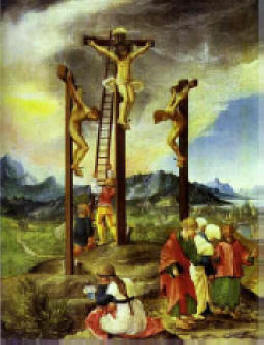
|
|
|
1.
Jesus was tried and executed by a Roman official (Pontius Pilate) for
treason against the state of Rome. This was a political crime, not a
religious one, and Jesus received the punishment specifically reserved for
treason under Roman law --crucifixion.
Given that Rome punished traitors with crucifixion, Jesus' statement (as
quoted in Mark vii:34) that "if any man would come after me, let him deny
himself, and take up his cross and follow me" had real meaning to his
Jewish compatriots bristling under the onus of Roman rule. As
Brandon (1967:145) notes, "The cross was the symbol of Zealot
sacrifice before it was transformed into the sign of Christian Salvation."
(The
Zealots
were a radical political faction among the Jews that undertook
insurrection against Roman occupation of Palestine during the first
century CE.) The account of Jesus' trial which presents Pilate as
believing in Jesus' innocence, but forced into pronouncing him guilty by
the Jewish leadership (Mark xvi; Luke xxiii; Matthew xxvii; John xix), is
both illogical and without factual basis. (The Gospel of Mark is the
earliest gospel. Its version of the trial and crucifixion is the original
version upon which the other three gospels increasingly elaborated.)
a.
We have considerable information about Pilate from several
non-Biblical sources. These sources consistently describe Pilate as a
stern government official who frequently demonstrated his toughness in
dealing with the Jews. On several occasions,
he instituted actions designed to intimidate both the Jewish population
and its leadership in order to illustrate his power and assert his
authority. It is highly unlikely that
Pilate would have been pressured by the Jewish authorities into convicting Jesus of sedition if he did not
believe that Jesus was guilty.
b.
The story of Pilate releasing Barabbas instead of Jesus is
also unrealistic. No evidence exists of a custom of releasing one Jewish
prisoner during the Passover, other than its
mention in the New Testament. Not even
Josephus, the principal Jewish
historian of the day, mentions it. Indeed, it is highly unlikely that
Rome would have followed such a practice in the most rebellious province
in its empire (or in any other province, for that matter). The Roman
government releasing a Jewish prisoner who had murdered Roman soldiers
during an insurrection as a Passover gesture would be comparable to the
Israeli government releasing a Hamas or Abu Nidal terrorists during
Ramadan, or to the British government releasing an IRA terrorist on St.
Patrick's Day.
c.
Furthermore, as Brandon (1967:4) points out, "Mark
presents Pilate, a Roman governor, not only as criminally weak in his
failure to do justice, but as a fool beyond belief. . . . To have offered
the people such a choice . . . (Jesus or Barabbas) . . . with the intention of
saving Jesus, was the act of an idiot." Given the political climate at
the time, the Jews would clearly have preferred to free a Jewish
nationalist, such as Barabbas, rather than a man who the gospels claim
said "Love the Romans" and "Render unto Caesar the things that are
Caesar's."
d.
Finally, if Pilate undertook such an action
independently, he would have had to answer to his superiors. If Jesus
was, in fact, preaching a philosophy of peace towards the Romans while Barabbas was killing Roman soldiers, Pilate would have put himself in
grave jeopardy by releasing Barabbas and executing Jesus. He would likely
have found himself convicted of treason and crucified.
2.
Jesus was crucified between two "thieves". The Latin term used to refer
to these "thieves" was
lestai.
This was the term the Romans used to refer to the
Zealots.
It more correctly means "brigands" or "terrorists" rather than thieves.
In the Gospel of John (xviii: 40), Barabbas is said to be a
lestai.
Barabbas was arrested for attacking the Roman garrison in Judea. This
attack appears to have occurred simultaneous with Jesus' attack on the
Temple. Some Biblical scholars believe that Jesus and Barabbas may have
been working together. Significantly, the name Barabbas is a corruption
through translation of the Hebrew term
bar abba which means "son of the
father". In the Gospel of Matthew (xxvii:16), Barabbas is referred to as
Jesus Barabbas, which translates to mean Jesus son of the father, the
equivalent of "Jesus, Jr." in English. One implication of Matthew's use
of the name Jesus Barabbas is the possibility that Barabbas may have been
Jesus' son. However, Jesus is the Greek translation of the Hebrew
name, Joshua, which was a common Jewish name that would have been given to
many men besides Jesus of Nazareth.
3.
At least one of Jesus' apostles was a Zealot. Luke
(vi:15) indicates that the apostle Simon was a Zealot (see also Acts
i:13). Some Biblical scholars think that Judas Iscariot may also have
been associated with the Zealots. Another radical group, known as the
Sicari,
existed at the same time as the Zealots. It is unclear whether the Sicari
were an elite group within the Zealots or a separate group pursuing the
same political goal
(see
Horsley 1979;
Hoenig 1970;
Smith 1971). The name Sicari means "dagger men." It was derived
from the word
sica, the Latin term for a small dagger. The members of
this group were called Sicari by the Romans because they used small
daggers to assassinate prominent Jewish leaders who they believed had
betrayed the Jewish people in order to maintain their positions of
prominence in the local community The name
Sicari derives
from the Latin,
sicarius,
which is remarkably close to Iscariot (simply invert the first two letters
of the word sicarius and replace the Latin ending [us] with the Greek
ending [ot] and you have Iscariot.) John (xiii:2) states that Judas
Iscariot was Simon the Zealot's son. If this is true, then Judas, like
his father Simon, may also have been a Zealot.
Significantly, in one exchange Judas criticizes Jesus for wasting money
anointing himself with oil when the money in question could have been
given to the poor (see John xii:5). This would have been precisely the
kind of issue that would have concerned a Zealot fighting for the
interests of the poor. Interestingly, Jesus' response to Judas' criticism
was a rather cavalier one, showing little regard for the welfare of the
poor: "You always have the poor with you, but you do not always have me."
(John xii:7). (Jesus' reply to Judas sounds remarkably similar in tone to
Marie Antoinette's infamous response to the poor of France who complained
that they could not afford bread: "Let them eat cake.") Judas' betrayal
of Jesus was more likely for socio-political reasons than for a mere 30
pieces of silver. Indeed, Matthew is the only evangelist to mention a
specific price of 30 pieces of silver. He simply borrowed the amount from
a quote in Zechariah (xi:12) in order to link Jesus with Old Testament
prophecy, which Matthew
--and only Matthew-- does
repeatedly! In fact, the gospel attributed to Matthew contains 19
Old Testament parallels
and 11
"fulfillment citations", none of which are
contained in any of the other gospels.
|
4.
Jesus came from
Galilee
and was in many ways a typical Galilean prophet, at least as he is
portrayed in Mark and Matthew. Exorcisms and healings of the sick
were a standard part of the repertoire of other Galilean prophets as well (see Vermez
1973). Galileans were considered by Judeans to be largely ignorant
of the fine points of Jewish Law, in part because they
retained their provincial identity and resisted the political, economic
and cultural dominance of Judea. Many of Jesus' disagreements with
the Pharisees (who were very concerned with upholding the Law) were
typical of Galilean laxity toward the Law, which was viewed by many
Galileans as a vehicle of Judean dominance over Galilee. For
this reason, the general Judean attitude towards Galilean prophets was a
condescending one, not unlike the attitude that many mainstream Christians
today have towards fundamentalist preachers in Appalachia and the rural
South.
|
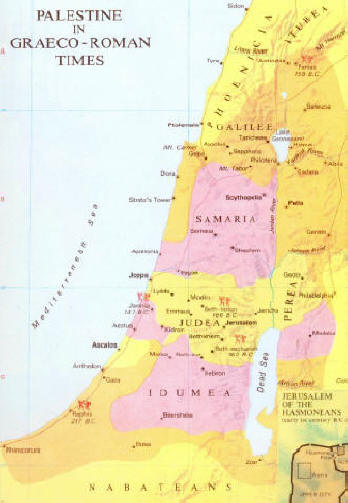
|
|
Horseley and Hanson
(1985) list at least 5 major bandit gangs, 6 messianic claimants and 5
self-proclaimed prophets (not including Jesus) that roamed the
Palestinian countryside during the first century
CE (see chart below).
Roman occupation of Palestine imposed an economic hardship on indigenous
peasant communities, and
Galileans played a prominent role in the militaristic-messianic
revolt against Roman rule that persisted throughout the the latter half
of the first century BCE and the first and early second centuries
CE. While serving his father, Herod executed a Galilean insurgent named Ezekias, who had a large following. Some
forty years later, upon Herod's own death, Ezekias' son Judas led a
revolt against Roman rule which resulted in his crucifixion and that of
2000 other rebels. In 6 CE, another Judas of Galilee, founded the
Zealots
(also called the
Fourth Philosophy
to distinguish it from the teachings of the Sadducees, Pharisees and
Essenes) and led a revolt against the imposition of direct Roman rule.
This revolt was sparked by the Roman census of Judea conducted that
year. This census, which is mentioned in Luke (ii:1), was
undertaken, as most censuses are, for the purpose of collecting taxes
(see Abruzzi, When Was Jesus Born?).
The exact fate of Judas and his followers is not known. However, Acts
(v:36-37), states that, like Theudas before him,
Judas "also perished, and all who followed him were scattered." The
mantle of Judas' leadership passed to his two sons, who were
subsequently crucified in 46-48 CE. Judas' third son, Menahem,
initially led the revolt against Rome in 66 CE. Finally, Eleazar, the
leader of the rebels at Masada (all of whom died in 73 CE) was also a
Galilean and a descendent of Judas. So strong was the tradition of
revolt in Galilee, that the terms Galilean and Zealot were frequently
used synonymously by the Romans. Roman occupation (like most
colonial situations)
spawned numerous prophets, most notably Theudas, "The Egyptian" and John the
Baptist. The message that these prophets taught was very similar
to that attributed to Jesus: the imminent end of the world and God's
impending judgment of humankind.
Jesus, thus, lived
during a period of heightened messianic fervor and of intense political activity against Rome.
He also lived in the
very province that served as a center of revolt. Jesus, therefore, grew up
in a land in which men like Judas of Galilee and his brothers were
considered martyrs and messengers of God, much as the Maccabees had been
viewed before them (and in much the same way that the leaders of Hamas
and Hezbollah are viewed by many Palestinians today). As a young
boy, Jesus could not have escaped being influenced by the events and the
intense feelings of the people around him. Furthermore, if he were
successful at attracting a large following in such a highly charged
political context, it would be highly unlikely that this following would
have been based on a message of love for the Romans and kindness towards
one's enemies. More likely, Jesus' popularity would have been
based on the compatibility of his mission with the tradition of a
militant Messiah represented by such popular Jewish leaders as Judas of
Galilee, Judas Maccabee, King David and Bar Kochva.
If
we look at the men Jesus chose as apostles, all of whom were Galileans
(There were no Judean apostles and, certainly, no Gentiles),
we see at least five who displayed a propensity towards violence. As
already indicated, Simon was a Zealot and Judas was likely a Sicari
and/or a Zealot. Another Simon was nicknamed Peter (meaning Rock, or
possibly the equivalent of "Rocky") and used a sword to cut off a
soldier's ear in the Garden of Gethsemane (Mark xiv:47; John xviii:10).
And both James and John, the sons of Zebedee, were also known as the
Sons of Thunder
(Mark iii:17) because of
their violent tempers. Indeed, at one point they wanted to destroy a Samaritan
village because its residents refused to allow Jesus to enter their
village (Luke
ix:54).
Bandits, Prophets, Messiahs
and Other Political Players
at the Time of Jesus
|
|
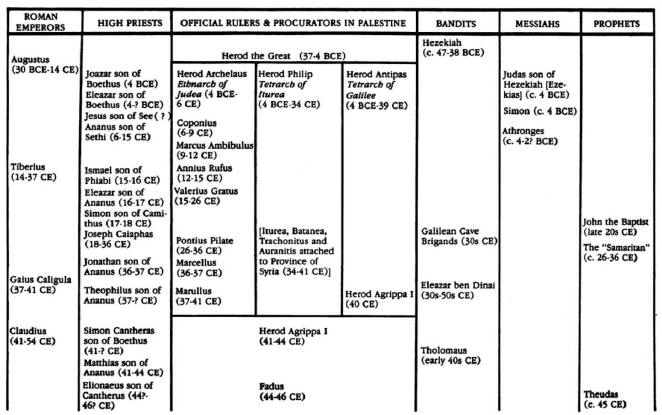

SOURCE: Horsley and Hanson (1985)
|
|
5.
The version of Jesus that has come down through the
centuries derives primarily from Paul (who was not an apostle and who, in
fact, never met Jesus),
and from the four canonical gospels, which:
(1) were written primarily
for
Gentile audiences, and
(2)
were written between 40 (Mark) and 70 or more
(John) years after Jesus had died. Thus, none of the New Testament
sources can be considered
"eyewitness"
accounts. Applying standard techniques used in the study of oral
literature, Funk, Hoover and the 76 Biblical scholars that constituted the
Jesus Seminar
(1996) concluded that only about 20% of the sayings of Jesus in the gospels
can be confidently attributed to him. (Significantly, not a single quote in
the entire Gospel of John was considered authentic by these scholars. The
gospel that was considered the most authentic was the
Gospel of Thomas, one of 16
Gnostic Gospels,
all of which were
rejected by the early Church as heretical and excluded from
the Christian Bible.) Because all four canonical gospels were
written several decades after Jesus had died, they were completely removed
from the political conditions in Palestine at the time Jesus lived. They
were also written by individuals who did not live in Palestine.
Also, given the
embarrassing fact that
Jesus was crucified by a Roman governor (and the fact that crucifixion was
largely reserved for the lowliest criminals (see Samuelsson 2011), the gospels were increasingly
concerned with separating Jesus from the political context of Roman
Palestine. The gospels are, therefore, completely silent regarding the
political events contemporary with the life of Jesus, political events that
convulsed the very land in which Jesus lived and preached. As Marvin Harris
(1974:161) notes,
From the gospels alone, you would never know that Jesus spent most of his life
in the central theater of one of history's fiercest guerrilla uprisings. You
could never guess that in 68 AD. ...(CE)... the Jews went on to stage a
full-scale revolution that required the attention of six Roman legions . . .
(about 36,000 soldiers) . . . under the command of two future Roman
emperors before it was brought under control.
6.
Furthermore, the Gospels themselves evolved through time.
Mark's gospel (70-75) is universally considered the first gospel by biblical scholars,
followed by Matthew (80-85), Luke (80-90) and John (90-100). In
addition, the four canonical gospels cannot be considered independent of one
another. About 80% of the verses in Mark are reproduced in Matthew, and
about 65% are reproduced in Luke, in largely the same order as they appear in
Mark. Consequently, the fact that a particular story exists in more than
one gospel does not necessarily increase that story's validity, since the
later gospel writer quite likely borrowed the story from the earlier gospel
(see Abruzzi,
The Birth
of Jesus).
Moreover, in addition to Mark, there are other
earlier sayings gospels that scholars believe existed and contributed to the
various gospels. One proposed source called
"Q" is believed to
be the origin of certain similarities between Mathew and Luke, while a
radically different earlier source, referred to as
"Signs", is thought
to have influenced John (see chart below).
| |
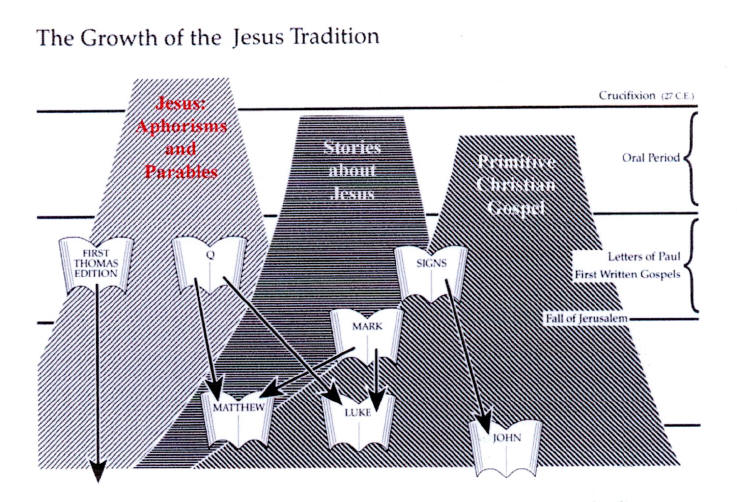
SOURCE: Funk, Hoover, et.al. (1993).
|
|
Mark's gospel begins with Jesus' baptism by John the Baptist. There is no
birth story in Mark, no visitation by Magi or by shepherds, no Christmas star,
no virgin birth, no "Slaughter of the Innocents" by Herod, and no census
forcing Joseph and Mary to go to Bethlehem. Each one of these stories is
presented in either Matthew or Luke. However, none of the same stories is contained in both gospels.
In fact, Matthew's and Luke's versions of the birth story contradict each
other in practically every detail (see Abruzzi,
When Was Jesus Born?). Indeed, the two gospels tend to agree with one another primarily where they
closely follow Mark's earlier account, because they likely borrowed those
stories directly from Mark's gospel. They tend to flatly contradict one
another where they contain material that was not previously borrowed from
Mark. Matthew and Luke completely contradict one another regarding events
surrounding the birth of Jesus, because none of this material is included in
Mark. They even contradict one another regarding the very year Jesus was
born. Matthew claims that Jesus was born during the rule of Herod the
Great. We know from Roman records that Herod died in 4 BCE. Luke, on the
other hand, claims that Jesus was born during the Roman census of Judea. That
census occurred in 6CE, ten years after Herod's death. It is unlikely
that either Matthew or Luke presents the correct date of Jesus' birth.
Furthermore, whereas Luke states that Jesus and his family came to Bethlehem
for the census and returned to Nazareth immediately afterwards, Bethlehem was
where Joseph and Mary lived in Matthew. Moreover, Matthew has Jesus and
his family flee to Egypt until the death of Herod before settling in Nazareth,
because they could not return to Bethlehem. Each author chose their respective settings for Jesus' birth in order to
create a dramatic context within which to place his birth in order to enhance
their story. For Matthew, Jesus' escape from
Herod's "Slaughter of the Innocents" was a replay of Moses' escape from the
Pharaoh's killing of the first born in Exodus (1:16-22) and the
Israelites escape from Yahweh's genocidal slaughter of Egyptian children (see
Exodus 11 & 12) in the
Hebrew Bible (the Christian's Old Testament). Luke, on the
other hand, was not as tenaciously concerned with linking Jesus to Old Testament
prophecy, as
was Matthew, but showed more interest in placing Jesus' birth in the context of the Gentile Roman world
in which he existed. So, he placed Jesus' birth at the time of the Roman
census of Judea.
Similarly, the picture of Jesus evolves through the four gospels. Jesus is portrayed
in Mark and Matthew as a prophet primarily to the Jews, while he is presented
as a prophet to Jew and Gentile alike in Luke, and as the savior of all
mankind in John. Jesus preaches only among Jews in Mark and
Matthew. It is also in the first two gospels that Jesus refuses to
cure a
Syrophoenician woman's daughter
because the woman is a Gentile (Mark
vii:24-30; Matthew xv:21-28), and it is in Matthew (x:5-6) that he explicitly
instructs his apostles not to preach among the Samaritans but to preach only
among the Jews. In contrast, it is in Luke (ix:55) that Jesus restrains
James and John, "The Sons of Thunder", from destroying a Samaritan village
because its residents refuse to let Jesus preach there. We also see the
parable of the
"Good Samaritan"
only in Luke (x:30), as well as the story of Jesus curing 10 people in which
only the
Samaritan
returns to thank him (Luke xvii:16-17). And, finally, in John (iv:9-10,
22-23), Jesus shares a cup of water with a Samaritan woman and tells her that
she will be with him in heaven. Later, when the woman tells other
Samaritans about Jesus, they invite Jesus to stay in their village, which (in
direct contradiction to Mark and Matthew) he does for two days. They also immediately believe in Jesus as the messiah,
so charismatic is his presence (iv:39-40), again in direct contrast to Mark and Matthew where Jesus'
message is rejected by his contemporaries, Jew and Samaritan alike. The
Samaritans were the descendents of the former
Northern Kingdom
(see
Genealogy, Politics and History in the Book of Genesis) that
split from the Kingdom of David and Solomon upon Solomon's death. There
had always been animosity between the Judeans and Samaritans, and Luke (a
Gentile) was
playing upon that animosity in portraying the Samaritans in a good light.
The
same evolution of Jesus from local Jewish prophet to universal messiah can be
seen in his relation to the two "thieves" (lestai) next to
him on the cross. Whereas in Mark (xv:27) neither thief says anything to
Jesus, in Matthew ( xxvii:44) both thieves revile Jesus along with the rest of
the crowd gathered at the crucifixion. In Luke (xxiii:39-43), on the
other hand, one of the thieves (the
"Good Thief") acknowledges Jesus as the
messiah and is told by Jesus that "today you
will be with me in Paradise." No
thief is mentioned in John.
7.
The parochialism and possible insignificance of Jesus and his mission in
Palestine is strongly suggested by the fact that
no first-century sources outside the New Testament
clearly mentions him. No Roman records have survived that contain details
about Jesus or any of his contemporaries in Palestine. The earliest Roman source
that exists is a second-century reference to Jesus by the Roman Senator and historian,
Publius Cornelius
Tacitus. Tacitus (116-117 CE) refers to Jesus in his
Annals
(15: 44) in conjunction with his description of Nero's burning of Rome in 64
CE. According to Tacitus, in order to counteract accusations
that he himself had initiated the fire, Nero blamed the conflagration on
Christians. While
Tacitus' reference to Jesus corroborates elements of Christian belief, it
is not clear where Tacitus obtained his information. It could quite easily
have come from Christians themselves.
Hence to
suppress the rumor, he falsely charged with the guilt, and punished
Christians, who were hated for their enormities. Christus, the founder of the
name, was put to death by Pontius Pilate, procurator of Judea in the reign of
Tiberius: but the pernicious superstition, repressed for a time broke out
again, not only through Judea, where the mischief originated, but through the
city of Rome also, where all things hideous and shameful from every part of
the world find their center and become popular.
Josephus,
the principal Jewish historian of
the first century CE, appears to have mentioned Jesus twice in his
Antiquities
of the Jews
(18.3.3 and 20.9.1), first in a general description of Jesus, and second in
relation to the execution of Jesus' brother James. The first reference
constitutes a one-paragraph description of Jesus (18.3.3) that is included in
Josephus' discussion of the various Jewish
"prophets" and messianic claimants that appeared in Palestine during
the reign of Pontius Pilate. The authenticity of
this paragraph, however, is highly suspect. It is generally considered by biblical
scholars to have been inserted later by a Christian scribe. The
paragraph states:
At this time
there appeared Jesus, a wise man, if
indeed one should call him a man. For he was a doer of startling deeds, a
teacher of people who receive truth with pleasure.
And he gained a following both among
many Jews and among many of Greek origin.
He was the Messiah.
And when Pilate,
because of an accusation made by the
leading men among us, condemned him
to the cross, those who had loved him previously did not cease to do so. For he appeared to them on
the third day, living again, just as the divine prophets had spoken of these
and countless other wondrous things about him.
And up until this very day the tribe of
Christians, named after him, has not died out.
This paragraph is considered inauthentic (either wholly or in part) for several reasons. First of all,
it differs sharply both in its writing style and vocabulary, as well as in the tone of its commentary,
from the surrounding narrative. While Josephus depicts
most of the
other bandits, prophets, terrorists, and messianic pretenders that arose
during Pilate's administration in largely negative terms, the paragraph in
question provides an
uncharacteristically glowing portrait of Jesus. Josephus was an upper class
Pharisee, who had little respect for those who claimed to be
either prophets or messiahs --of which there were many during the first
century CE (see Horsley and Hanson 1985). He, in fact, blamed them and their
actions for the eventual destruction of Jerusalem by Rome in 70 CE. It is,
therefore, highly unlikely that Josephus would have provided a glowing description of
Jesus had he, indeed, claimed to be either a prophet or the messiah.
Furthermore, Josephus' description of Jesus does not appear until
the fourth century. No church leaders prior to this time mention
Josephus' statement, even though the existence of such a declaration would clearly have
served their purposes. For example, while Origen (c. 185-254 CE) quotes the
paragraph mentioning Jesus in relation to the execution of James on three
separate occasions, he never once mentions the description of Jesus presented
in the above paragraph, suggesting that the paragraph did not appear until
after Origen's death.
Now Origen not only does not
quote the Christian passage, but he uses such language as to make it
impossible to maintain that the words "he was the Christ" appeared in the
text, for he says: Though he (Josephus) did not believe in Jesus as the
Christ, he none the less asseverates that the calamity of the destruction of
the Temple came upon the Jews for putting to death James, who was most
distinguished for his justice. If the Christ passage really appeared in
Josephus, it would be hard to believe that Origen, who
quotes the
James passage, should not know the other passage, which is recorded in the
same chapter. (Zeitlin 1928: 233-234)
Most Importantly, those portions of Josephus' quote
highlighted in
lavender indicate that the description of
Jesus contained in the above paragraph and attributed to Josephus was written by someone who clearly
believed: (1)
that Jesus was a god;
(2)
that Jesus arose from the dead; and
(3) that Jesus was predicted by several Old Testament prophets. These were
the beliefs of those individuals who eventually came to be known as
Christians.
Josephus was an Orthodox Jew, not a Christian. He never converted to
Christianity. He, therefore, would not have made statements that would
only be made by a Christian. The above paragraph also states that the
Jews instigated Jesus' crucifixion. This was also a specifically Christian
idea. Since Josephus was not a Christian, it is unlikely that he would have
made this statement either
(see
Zeitlin 1928:
The Christ Passage in Josephus). It is, therefore, highly likely that the entire paragraph is a forgery (for an
extensive discussion of forgery in early Christian writing, see Ehrman 2013).
A less likely alternative would be to accept the paragraph as authentic, minus the lavender text (see
Mykytiuk 2015).
Josephus' description of Jesus stands in
sharp contrast with his discussion of John the Baptist, which is universally
accepted by biblical scholars as authentic. To begin with, Josephus'
discussion of John the Baptist contains 162 words, compared to only 60 words
about Jesus (Meier 1992: 227, note 8). Furthermore, unlike Josephus' reference
to Jesus, his description of John is largely invariant in all available
manuscripts of Antiquities.
In Addition, in contrast with Josephus' purported description of Jesus, the
vocabulary and style of the writing in his description of the Baptist are
consistent with that of the rest of
Antiquities
(see Meier 1992: 225-226). It is also significant that, while Josephus
presents a detailed discussion of the circumstances and popular beliefs
surrounding the execution of John (including the belief that Herod's army was
later destroyed as God's revenge for John's death), the above paragraph
contains at best a perfunctory mention of Jesus' execution.
In the second reference to
Jesus in Antiquities
(20.9.1), Josephus refers to Jesus in order to identify Jesus’ brother James,
the leader of the church in Jerusalem, who was executed by the high priest Ananus during the interregnum that occurred
in 62 CE between the death of the Roman
governor Festus and arrival of his replacement Albinus. Josephus
described the situation as follows:
Being therefore this kind of person [i.e., a heartless Sadducee], Ananus,
thinking that he had a favorable opportunity because Festus had died and
Albinus was still on his way, called a meeting [literally, "sanhedrin"] of
judges and brought into it the brother of Jesus-who-is-called-Messiah ...
James by name, and some others. He made the accusation that they had
transgressed the law, and he handed them over to be stoned.
The principal reason Josephus
mentions this incident is that Ananus' execution of James resulted in the
former losing his position as high priest.
Mykytiuk (2015: 4-5) explains why
Josephus includes a reference to Jesus in his description of that event.
James (Jacob) was a common Jewish name at this
time. Many men named James are mentioned in Josephus’s works, so Josephus
needed to specify which one he meant. The common custom of simply giving the
father’s name (James, son of Joseph) would not work here, because James’s
father’s name was also very common. Therefore Josephus identified this James
by reference to his famous brother Jesus. But James’s brother Jesus (Yehoshua)
also had a very common name. Josephus mentions at least 12 other men named
Jesus. Therefore Josephus specified
which
Jesus he was referring to by adding the phrase
"who is called Messiah,"
It is
significant that, in referencing Jesus during his discussion of the execution
of James, Josephus makes no mention that this is the same Jesus he described
previously in Antiquities.
As Zeitlin (1928: 235) clearly points out,
If these two passages, i.e. the
Christian passage and the James passage, really belong to Josephus, Josephus
in the second passage, where he says "James the brother of Christ," would have
said that
"this is the Christ who was crucified by
Pilate,"
as we see throughout his books that
where he has occasion to mention a name twice he repeats that "this is the
same man."
Significantly, an Old Russian translation of Josephus'
Jewish Wars
exists which diverges sharply from the Greek translation of that work. In it,
Josephus describes "an anonymous Wonder-worker, very much like Jesus, who was
associated with a projected attack on the Romans in Jerusalem, which the
latter anticipated and bloodily suppressed (Brandon 1967:368)." According to
Brandon (ibid.), the account of the teaching of the followers of this
Wonder-worker "accords remarkably with what we have been led to infer
concerning the teachings of the Jewish Christians."
Several researchers claim that Jesus may never have existed, arguing that
Jesus was a later mythical creation to serve the needs of a growing cult, as
were Zeus, Jupiter, Osiris, Mithras and the many other gods of the ancient
world (cf. Wells 1988; Price 2011; Carrier 2014; Carrier et.al. 2013). One
support for their claim is the absence of any clear extra-Biblical mention of
Jesus. The word
Christian is used only 3 times in the New Testament: twice in
Acts
(xi:26, xxvi:28) and once in
1Peter
(iv:16), but never in any of the gospels. It is
not until at least 40 years after Jesus' supposed death, he argues, that
any biographical material about Jesus emerges. The earliest New Testament
writings about Jesus are those contained in
Paul's Epistles.
Paul presents no biographical information about Jesus and very little hint
that Jesus was an actual human being. According to Wells, Paul makes no mention of Jesus'
birth, his crucifixion or of any other events in his life. What little
biographical information about Jesus does emerge, appears much later in the
various gospels and is both spotty and highly contradictory. Even the
claim that Jesus came from Nazareth is questioned and is considered by many
scholars to be a mistranslation of the word
Nazarite, which
refers to someone who has taken a vow to adhere to very strict Jewish
religious rules (see
Numbers. 6:2-21).
In fact, Nazareth may not have even existed in Jesus'
time. It is not mentioned anywhere in the Old Testament and does not
appear on any local maps until the second century CE. It is not
mentioned by Paul; nor is it contained in the Talmud, even though the Talmud
names 63 Galilean towns. Furthermore,
Josephus, who was the military leader placed in charge of Galilee during the
the revolt of 66-70 CE does not mention Nazareth in the list of towns he
visited in order to obtain recruits and supplies. At present, the
archaeological evidence for the earliest habitation of Nazareth are
inconclusive. Thus, little credible historical information exists from which a
reliable portrait of Jesus can be constructed, There is, therefore, some truth to
M.S. Enslin's (1961) comment on Jesus, "We do not have enough material to
write a respectable obituary."
8.
The early Christian Church was centered in
Jerusalem and was originally under the leadership of
James, the brother of Jesus
("Is this not the carpenter, the son of Mary and the brother of James and Joses and Judas
and Simon?" --Mark vi:3) (see also Matt.
xiii:55; Mark xvi:40; Gal. i:19; Acts xxi:18, xv:6-22). Paul was
not converted until about 34 CE, and by what he claimed was a divine
revelation. (The Uniformitarian Principle
in science would require that researchers treat the claim of divine revelation
by Paul using the same methods that would be applied to someone else making a
similar claim, whether today or in the past.) However, Paul's authority
was not accepted by James or by the members of Jerusalem Church. In
fact, Paul was strongly criticized and made to appear before James because of
the unacceptability of the version of Jesus that Paul taught (see Acts
xxi:20-26). While James did not recognize Paul's authority, Paul clearly
deferred to James.
Acts
of the Apostles
(xv:1-22; xxi:20-21) and the various epistles of
Paul clearly indicate that an intense conflict existed between
Paul and the leaders of the original Jerusalem Church
(see Abruzzi, The
Birth of Jesus, note #11). Paul and the
evangelists who later wrote the Gospels presented the
picture of a universalistic, non-Jewish messiah that was in sharp contrast
with the version of Christianity practiced by those who preached alongside
Jesus and who were eyewitnesses to his life. According to Paul, the members
of the Jerusalem Church taught a
"different Gospel" and presented
"another
Jesus" (Cor. II:4). While Paul taught of a Messiah to Jew and non-Jew alike,
the early apostles retained their Jewish orthodoxy. James was a respected
member of the Jewish community who closely adhered to Temple observances.
Moreover, the apostles were generally zealous in observing the dietary
regulations of the
Torah.
At one point Peter was rebuked by emissaries from James for eating among the
Gentiles while visiting Paul, and he subsequently
"withdrew from that place" (Gal. ii:11-12). When Paul was commanded to appear before James he was
expected to observe Temple (i.e., Jewish) rituals in order to demonstrate his
fidelity to the Jerusalem Church, and a major dispute occurred over
circumcision and the degree to which Gentile converts were expected to adhere
to Jewish law (see Acts xvi:3; xxi:18-26). Indeed, Barnabas, Paul's companion,
had to be circumcised on the spot before he and Paul would be allowed to
enter the Temple to meet with James.
Furthermore, members of the Christian
Church in Jerusalem included priests, Pharisees (Acts
vi:7, xv:5) and others who were described as
"zealous of the law" (i.e., the Torah) (Acts
xxi:20). With the total destruction of the Temple by the Romans in 70 CE and
the resulting devastation of Jerusalem, no trace remains of the original
Jerusalem Christian Church --the church founded by Jesus' apostles-- and its teachings. What little
may have been preserved, was either eliminated or edited by the later Gentile
Church leadership. Some scholars think that he descendants of the original Jerusalem Christian Church
crossed over into Jordan and later became known as the
Ebionites. The
Ebionites survived for about a century. Eventually, they were declared
heretics by the larger and more powerful Gentile Christian Church and
disappeared from history. (As an interesting side note, Martin Luther
purportedly so disliked the
Epistle of James,
which is generally attributed to James, the brother of Jesus, that he
regularly ripped it out of his Bibles.)
9.
Despite
editing, however, several accounts of Jesus' actions remain in the gospels which strongly
suggest that he taught a gospel in accordance with traditional Jewish notions
of a messiah and that he viewed himself as a prophet exclusively to the Jews.
To begin with, Jesus chose
12 apostles (not 10, 15
or 20). Twelve was an important number to the Jews: it represented
the mythical twelve tribes of Israel. Likewise, despite the presence of
many Gentiles (non-Jews) throughout Palestine, Jesus did not choose a single
Gentile as an apostle (or, for that matter a single woman). Indeed,
Jesus' parochialism is strongly evidenced by the fact that every one of his
apostles was a Galilean. Not one apostles even came from Judea or
Samaria. In addition, Jesus and his apostles preached only among the
Jews, and they never preached outside of Palestine, an area the size of New
Jersey (see map below).
Also, when
Peter asks Jesus, "We have left everything to
follow you! What then will there be for us?",
Jesus replies, "I tell you the truth, at the
renewal of all things, when the Son of Man sits on his glorious throne, you
who have followed me will also sit on twelve thrones, judging the twelve
tribes of Israel." (Matthew ixx:27-28)
In other words, Jesus' mission is to the Jews --i.e., to the Twelve Tribes of
Israel.
Finally, in the
Synoptic Gospels (Mark,
Matthew and Luke) Jesus is always pictured adhering to all the tenets of
Judaism. In Matthew (v:17) Jesus says
"Do not think that I have come to abolish the Law or the prophets. I come not
to abolish but to fulfill." In Matthew
(x:5-6) Jesus commands his apostles: "Go
nowhere among the Gentiles, and enter no town of the Samaritans; but go rather
to the lost sheep of the house of Israel." In
Matthew (x:34-35) he also states: "Think not
that I come to send peace on earth: I come not to send peace but a sword.
For I come to set a man at variance against his father, and the daughter
against her mother, and the daughter-in-law against her mother-in-law."
Again in Matthew (x:38) he says, "And whoever
does not take up the cross and follow me is not worthy of me."
And yet again in Matthew (x:14-15) Jesus states:
"If anyone will not welcome you or listen to your words,
shake off the dust from your feet as you leave that house or town. Truly
I tell you, it will be more tolerable for the land of Sodom and Gomorra on the
day of judgment than for that town."
|
Jesus'
initial refusal to heal the daughter of the "Syrophonecian woman" (Mark
vii:24-30; Matthew xv:21-28) was based on her being a Gentile, and he
resorts to calling her a "dog",
a derogatory term applied by Jews to Gentiles at that time:
"Let the children be fed first, for it is not fair to
take the children's food and throw it to the dogs" (Mark
vii:27;
see Abruzzi, The
Birth of Jesus, note #11) Jesus eventually agrees to cure the woman's daughter,
but only after she demonstrates her subservient status as a Gentile:
"But she answered him, 'Sir, even the dogs under
the table eat the children's crumbs'" (Mark
vii:28; see also Matthew xv:27). Similarly, he instructs his apostles
to "Do not give what is holy to dogs; and do
not throw your pearls before swine." (see
Matthew vii:6). The term swine (pig) was a derogatory term used by the Jews of the time to refer to Roman
soldiers (much as anti-war demonstrators of the 1960's used the same term to
refer to the police).
Jesus'
clearing of the Temple was in the militant tradition of Jewish resistance
groups like the Zealots and the
Sicari in that it threatened the economic
base of the religious aristocracy (the Sadducees) who helped maintain Roman
rule. This was
likely the reason that religious leaders arrested Jesus. Some scholars
also argue that Jesus could not
conceivably have cleared the Temple alone and unaided (anymore than a single
person today could clear an entire shopping center by themselves). Indeed,
those in charge did not try to arrest him at the time because they feared the
wrath of the crowd (Mark xxii:12). They arrested him later in the evening
instead when it was safer to do so. |
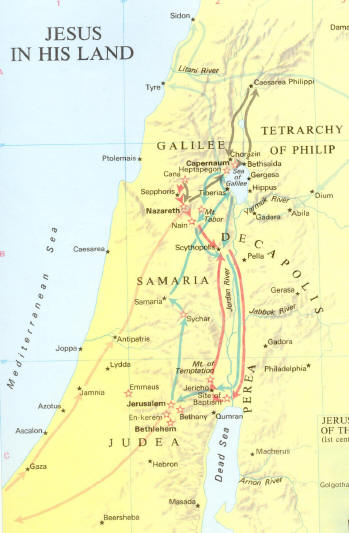
|
|
Significantly, the cleansing of the temple occurred
shortly following Jesus' grand entrance into Jerusalem among a cheering crowd
shouting
"hosanna", a term which had a political meaning at the time (Brandon
1967), and in a manner according to which earlier Jewish prophets claimed the
Messiah-king would come to restore Israel's freedom.
Coincident with Jesus' entrance into Jerusalem and his skirmish at the Temple,
an attack was made against the Roman garrison. It was during that attack (in
which several Roman soldiers were killed) that
Barabbas was apparently
arrested. Some scholars believe that the two events were connected. In any
case, later that night anticipating his arrest on the Mount of Olives, Jesus
made sure his apostles were armed (Luke xxii: 35-38).
10.
In the earlier gospels,
Jesus is also clear when the day of judgment was to occur. As he sent his
apostles out he said: "And as you go proclaim the good news, "The kingdom of
heaven has come near." (Matthew x:7) "But when they persecute you in one
town, flee to the next; for truly I tell you, you will not have gone through
all the towns of Israel, before the Son of Man comes." (Matthew x:23). In
Luke (xxi:32), Jesus says: "Truly I tell you, this generation will not pass
away until all things have taken place." It is only later, with the writing
of the Gospel of John (by which time Jesus had not returned) that an explicit
reference to the time of the second coming is dropped. It is for this
reason that most scholars view Jesus as an
eschatological prophet who, like John the Baptist
and numerous others at the time, preached that the end of the world was at hand (cf.
Ehrman 1999).
This picture of Jesus is presented very clearly in Mark and in Matthew.
However, in the later gospels the picture of Jesus changes; since the events
that Jesus forecasted did not occur, the timing of the Second Coming becomes
increasingly indeterminate.
11.
Like all written documents, the Bible has
undergone numerous changes during the past 2,000 years. It has, first of all,
undergone numerous translations and revisions. In the past 100 years,
archaeological discoveries at
Qumran
in Palestine, at
Nag
Hammadi
in Egypt
and elsewhere have uncovered many Christian and pre-Christian documents that
were destroyed and were, therefore, eliminated from the Christian record
(particularly as those referred to today as the
Orthodox faction gained control of the Church during
the fourth century CE). Over 50 documents were discovered at Nag Hammadi
alone, including gospels by Thomas, Peter, James (Jesus' brother), Mary
Magdalene and Philip (see Pagels 1981; Barnstone 1984; Robinson 1988).
The discovery of these documents forced hundreds of changes in the
King James Version
of the Bible and has spawned the creation of whole new versions of the Bible,
including the
New Jerusalem Version
and the
New
Revised Standard Version.
As a result of these discoveries, the King James Version is now considered a
highly inaccurate (though beautifully written) version of the Bible.
Significantly,
the Gnostic Gospels present a very different picture of Jesus and of
the relation of Mary Magdalene and the Apostles to Jesus. Mary is
variously referred to in the
Gnostic Gospels
as the "One who knew the All", the "Apostle who excels the rest", the
"Disciple of the Lord", "One who reveals the Greatness of the Revealer", the
"Inheritor of the Light", the "Privileged Interlocutor", the "One who is
always with the Lord", the "One whom they call His Consort", and the "Chosen
of Women".
The
Gospel
of Philip
even
states:
“The Lord loved Mary more than all the disciples and kissed her on her
mouth often. The others said to him: Why do you love her more than all of
us? The Savior answered and said to them: Why do I not love you like her?”
The
Gospel of Mary
discusses the jealousy of the apostles towards her and of her conflict with
them (especially Peter) due to the closeness of her relationship with Jesus.
It is the "special relationship" between Jesus and Mary Magdalene
presented throughout the
Gnostic Gospels
that has provided the basis for the claim that Jesus and Mary were married
made in such popular books as
Holy Blood Holy Grail
and
The DaVinci Code.
Those who claim
that Jesus and Mary
Magdalene were married argue that, given Jewish customs during the first century
CE, it is unlikely that a single woman could have traveled alone with Jesus
without creating a controversy. Some have even suggested that the
wedding feast at Cana was Jesus' wedding. Why, they ask, would servants
have come to guests at a wedding to tell them they are out of wine? More
likely, the servants would have gone to the groom and to the family giving the
wedding to inform them of the situation in order to find out what to do.
Finally, all four canonical gospels list Mary Magdalene as the first person at
Jesus' tomb and the one who discovered his body missing. She was the
original disciple of the risen Jesus --the
Apostle to the Apostles.
Much of the censorship of the New Testament occurred during
the third and fourth centuries CE as Christianity became an established state
religion within the Roman Empire. In 313 CE, Constantine issued the
Edict of Milan,
which forbade persecution of all forms of monotheism, including Christianity.
Constantine, who converted to Christianity on his deathbed, also presided over the
Council
of Nicea
in 325
CE, at which time three principles were established as central tenets of
Christianity:
(1) the divinity of Jesus,
(2) Jesus' virgin birth, and
(3)
Jesus' physical resurrection. These principles were established by a vote of
those who attended the Council and incorporated into a document known as
The Nicene Creed. This date, thus, marks the effective
beginning of modern Christianity.
The Council of Nicea and The Nicene Creed were a
response to the fact that there were many Christian denominations that
rejected one or more of these three principles, including
Gnostic
Christians.
These Christians referred to the more conservative form of Christianity based
on the above three principles as the "faith of fools" for accepting such
absurd ideas (Pagels 1981). To the Gnostic Christians, these three principles
were to be understood as referring to the spiritual aspect of Jesus; they were
not to be taken as literal statements (much as fundamentalist Christians today
accept the literal interpretation of the Bible). The acceptance of these three
principles as fundamental Christian beliefs marked the political victory of
the orthodox and literalist faction within the early Church. With the
power of Rome on the side of the orthodox faction (governments tend to side with
orthodox conservatives rather than free-thinking liberals), all opposing
forces, especially the Gnostics, were branded as heretics and eliminated.
However, numerous dissenting groups arose within
Christianity during the following centuries that rejected the three basic
principles mentioned above. These were routinely defined as heretics and
forcefully suppressed by the Church because they represented threats to its
authority and power. The most notable of these groups were the
Albigensians
(Cathars)
of southern France against which the Church launched one of its holy wars or
Crusades, comparable to a Muslim
jihad. (Many
characteristics associated with the Christian Crusades were similar to those
of the the Muslim jihad [holy war], including the proclamation that those who
died in battle would go directly to heaven.)
Finally, in 331 CE, Constantine commissioned the compiling
of the
New Testament
(The Christian Bible). In 367 CE, Bishop Athanasius of Alexandria compiled a
list of books to be included in the New Testament. His list was eventually
ratified by a Church council at Hippo in 392 CE and again by the Council of
Carthage in 397 CE. Early Christian writings that did not conform to the
orthodox view of Christianity --of which there were many (see Pagels
1981; Barnstone 1984; Robinson 1990) -- were
destroyed, while parts of New Testament documents (including sections of the
four canonical Gospels) that did not adhere to the dominant view were
removed. (The
Gospel of John,
for example, was very controversial and was initially rejected by many
orthodox bishops as being non-canonical. It was considered too Gnostic.
Similarly, as mentioned above, the original Gospel of Mark did not include a
resurrection.) It was in this manner that the New Testament came to be what
it is today. As Pagels (1981:179) clearly notes,
"It is the winners who write
history --their way."
Of the nearly 5,000 early manuscript versions of the New Testament, not one
predates the 4th century CE. It is only with the discoveries at Qumran
and Nag Hammadi that many of the early documents destroyed during the fourth
century have been recovered, giving us a fresh new look at early Christianity.
Asimov, Isaac. (1991).
Asimov's Guide to the Bible: The New Testament.
Wings Books.
Brandon, S.G.F. (1967).
Jesus and the Zealots: The Study of the Political Factor in Primitive
Christianity.
New York: Charles Schribner's Sons.
Brandon,
S.G.F (1968).
The Trial of Jesus of Nazareth.
New York: Stein and Day.
Barnstone, Willis (ed.).
(1984).
The Other Bible: Jewish
Pseudepigrapha, Christian
Apocrypha, Gnostic Scriptures.
New York: Harper and Row.
Carrier, Richard. (2014). On the Historicity of
Jesus: Why We Might Have Reason for Doubt. Sheffield: Sheffield Phoenix Press.
Carrier, Richard, D.M. Murdock, Earl Doherty,
Ren Salm, David Fitzgerald, Frank R. Zindler, and Robert M. Price. (2013).
Bart Ehrman and the
Quest of the Historical Jesus of Nazareth: An Evaluation of Ehrman s Did Jesus
Exist?
Cranford, NJ:
American Atheist Press.
Crossan,
John D. (1992).
The Historical Jesus: The Life of a Mediterranean Jewish Peasant.
San Francisco: Harper Collins.
Davies,
A. Powell. (1956).
The Meaning of the Dead Sea Scrolls.
London: Penguin.
Ehrman, Bart. (1999).
Jesus.: Apocalyptic
Prophet of the New Millennium.
Oxford: Oxford University Press.
Ehrman, Bart. (2007).
The New Testament: A Historical
Introduction to the Early Christian Writings.
Oxford: Oxford University Press.
Ehrman, Bart,. (2013).
Forgery and Counterforgery: The Use of
Literary Deceit in Early Christian Polemics.
Oxford: Oxford University Press.
Eisenman, Robert. (1997).
James: The Brother of Jesus.
New York: Penguin Books.
Eisenman, Robert. (1993).
Dead Sea Scrolls Uncovered. New York: Penguin
Books.
Enslin, M.S. (1961).
The Prophet of Nazareth.
New York: McGraw-Hill.
Fox,
Robin L. (1992).
The Unauthorized Version.
New York: Knopf.
Fredrikson, Paula. (2000).
From Jesus to Christ: The Origin of New Testament Images of Jesus.
New Haven: Yale University Press.
Friedman, Richard Elliott. (1987).
Who Wrote the Bible?
New York: Harper and Row.
Funk, Robert, Roy
Hoover and the Jesus Seminar. (1996).
The Five Gospels: What Did Jesus Really Say?
San Francisco: Harper.
Harris, Marvin. (1974). "Messiahs", and
"The Secret of the Prince of Peace." in
Cows,
Pigs,
Wars and Witches.
New
York: Random House.
Horsley, Richard and
John Hanson. (1985).
Bandits, Prophets, and Messiahs: Popular
Movements at the Time of Jesus.
San Francisco: Harper and Row.
Meier, John P. (1992). John the Baptist
in Josephus: Philology and Exegesis.
Journal of Biblical Literature
111(2): 225-237
MyKytiuk, Lawrence. (2015). Did Jesus
Exist? Searching for Evidence Beyond the Bible. In Robin Ngo and Megan Sauter
(eds.).
Who Was Jesus? Exploring
the History of Jesus' Life.
Biblical Archaeology Society.
Pagels, Elaine (1981).
The Gnostic Gospels.
New York: Random House.
Price, Robert M. (2011).
The Christ-Myth Theory and
Its Problems.
Cranford, NJ:
American Atheist Press.
Robinson, James M. (ed.). (1988).
The Nag Hammadi Library.
New York: Harper and Row.
Samuelsson, Gunnar. (2011).
Crucifixion in Antiquity: An Inquiry
into the Background and Significance of the New Testament Terminology of
Crucifixion.
Tübingen, Germany: Mohr Siebeck.
Stanton, G.N.. (1989).
The Gospels and Jesus.
London: Oxford University Press.
Vermes, Geza. (1973).
Jesus the Jew: A Historian's Reading of the Gospels.
Philadelphia:
Fortress Press.
Vermez, Gaza. (2006).
Who's Who in the Age of Jesus.
Penguin Books.
Wells. G.A. (1988).
The Historical Evidence for Jesus.
Buffalo: Prometheus Books.
Wilson, A.N. (1992).
Jesus: A Life.
New York: Norton.
Wilson, W. R. (1970).
The Execution of Jesus: A
Judicial, Literary and Historical
Investigation.
New York: Scribner's Sons.
Zeitlan, Solomon. (1967).
The Rise and Fall of the
Judean State: A Political, Social and Religious History of the Second
Commonwealth, Volume Two: 37 B.C.E. - 66 C.E.,
Jewish Publication Society of America.
Zeitlin, Solomon. (1928). The Christ
Passage in Josephus.
The
Jewish Quarterly Review,
18(3): 231-255.
Zindler, Frank R. (1998).
"Did Jesus Exist?"
The American Atheist,
(Summer Issue).
* *
* * *
Of Related
Interest:
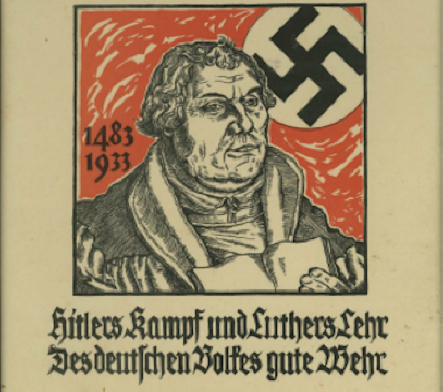
Martin
Luther
Hero
and Inspiration to the Nazis
.jpg)
The Date of Jesus' Birth
.jpg)
Mithraism and Christianity

Bill O'Reilly is Killing Jesus
* *
* * *
|
|

|
Body Piercing Saved my
Soul! |
|
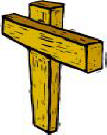 |
Jesus Beat the Devil with Two
Sticks! |
|
* *
* * *

Home






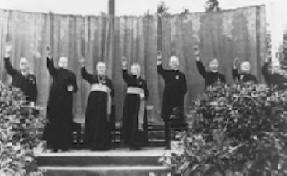
.jpg)

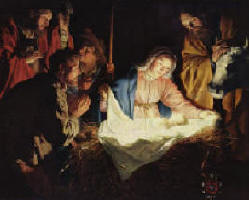

.jpg)
.jpg)
